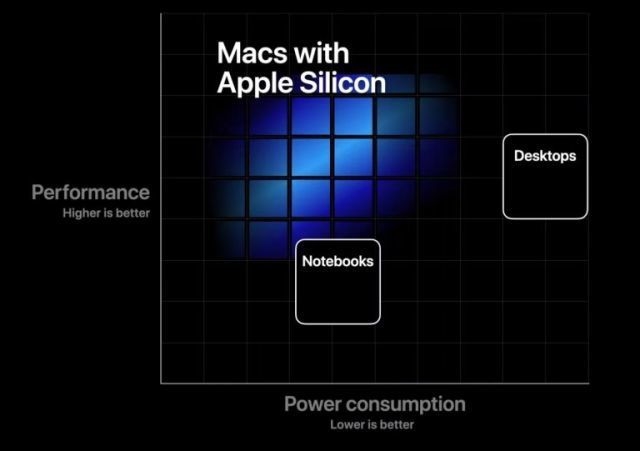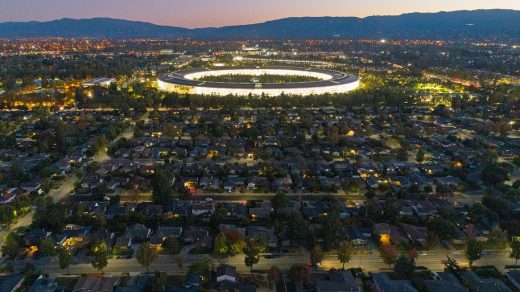What to expect from Apple’s Mac event
After years of speculation, Apple announced this summer that it would start using its own chips in its computers. At this year’s WWDC keynote, the company said that its 15-year partnership with Intel would soon end. In its place, new Mac models would use ARM chips, dubbed “Apple Silicon,” similar to those already found in the iPhone and iPad. CEO Tim Cook said that he expected to ship the first Mac with Apple Silicon “by the end of this year.”
Now, on Tuesday, November 10th, Apple is holding its third virtual press event of the fall, dubbed “One More Thing,” and we expect we will see the first Apple Silicon Macs. It might seem odd that a computer launch in 2020 would focus so much on its processor, but then this is no ordinary chip launch. Yes, there are plenty of other devices that use smartphone chips for their brains, but none as mainstream as the ones we’ll see from Apple.
The first Apple Silicon Mac
It’s almost certain that the first machines with Apple Silicon will be laptops, given their need for thermal and power efficiency. Apple has even tipped its hat to this, with an AR easter egg of its logo animated as a laptop lid closing in its event invite. It’s also plausible that a thin-and-light laptop will better play to the new silicon’s strengths compared to Intel’s existing chips.
This is super cool. The Apple event logo in AR resembles opening and closing a MacBook.
A new MacBook powered by Apple Silicon is coming. pic.twitter.com/R6pIpJTWPC
— Neil Cybart (@neilcybart) November 2, 2020
Bloomberg reports suggest that Apple won’t announce just one laptop, but two or three. It claims that Apple’s suppliers are already building versions of the existing 13-inch MacBook Air, as well as the 13-inch and 16-inch MacBook Pro, with the new chips. It reported that the two 13-inch models are likely to take center stage at the event, but don’t expect any major design changes beyond the processor swap.
Notable Apple analyst Ming-Chi Kuo, however, says that we’ll only see a 13.3-inch MacBook Pro at the event. In remarks, published at iMore, Kuo claims that Apple will release an Apple Silicon MacBook Air at the very end of 2020 or the start of 2021. He added that the future roadmap includes totally-redesigned 14- and 16-inch MacBook Pros arriving towards the end of 2021.
A Twitter user by the name of @L0vetodream, who has a track record of accurate (if terse) leaks, has also weighed in. They have said “13 inch X2,” which could be interpreted as an affirmation of the Bloomberg report that we’ll see two 13-inch machines at the event.
13 inch X 2
— ????? (@L0vetodream) November 2, 2020
The same Bloomberg report added that Apple is working on a new Mac Pro that was “about half the size” of the current iteration, as well as a new iMac. But there are no signs that we’ll see an Apple Silicon desktop announced at this particular event. Apple will almost certainly launch one eventually, but we’d expect the Mac Pro to be the last computer up for replacement, not one of the first. This also gives Apple longer to ensure that its offering can outperform Intel’s highest-end chips used in its existing pricey desktops like the Mac Pro and iMac Pro.
One other rumor, published by China Times in August, claims that we’ll actually see the return of the 12-inch MacBook, which would benefit from a power-efficient Apple Silicon chip, at the event. This device, codenamed “Tonga” would have a Retina display, weigh less than a kilogram (2.2 pounds) and have a battery life of 20 hours. Sadly, we have not seen anything further to support this rumor.
We may also see Apple Silicon laptops costing a lot less than the laptops they’re replacing. Ming-Chi Kuo, as reported by 9to5Mac, claims that dumping Intel will see Apple’s component costs fall by as much as 60 percent. Kuo adds that Apple will need to source components like USB controllers which Intel has historically bundled with its products, eating some of that cash. But it’s plausible that Apple could choose to pass along some of its savings — The New York Times wrote this summer that Apple currently spends around $3.4 billion a year buying chips from Intel — to users.
To be clear, Apple will still release several more Intel Macs in its future and may even still supply components for those machines in the future. This event will not be an instant, seismic shift, but the start of a planned two-year transition toward Apple Silicon.
Apple Silicon
It’s widely believed that whatever machine Apple announces, it will be packing a more powerful version of Apple’s A14 chip, which powers the iPhones 12, as well as the new fourth-generation iPad Air. MacRumors, citing Digitimes, claims that the chip will be dubbed the “A14X,” which is manufactured like its siblings on TSMC’s new 5-nanometer line.
Back in April, Bloomberg claimed that the A14X would pack eight high-performance cores and four energy-efficient cores, or twelve cores in total. The iPhone 12’s A14 Bionic has just six: two high-performance and four low-power cores for better power efficiency on the road. But it’s not just about the cores themselves, it’s also about the dedicated components that Apple adds to its chips to reduce load on the main cores, including the Neural Engine used to power features like FaceID.
Apple rarely likes to talk about performance in raw numbers, and when it makes performance comparison, it uses its own benchmarks. It’s common knowledge that A-series chips have consistently outperformed other high-end mobile chips over several years. AnandTech, late last year, said that even a flagship Snapdragon’s “peak performance isn’t able to match Apple’s sustained performance figures.” But the real interest here is to see whether the A14X will be able to outperform an Intel chip.

Apple is ditching Intel because the chipmaker has famously failed to meet its own deadlines for new chip processes —and the more powerful, more efficient chips they’re meant to make. The foundry has struggled with its manufacturing in the last few years, causing it to lose much of its lead in the industry to AMD. Apple is hoping that its knowledge of power-efficient, high-performance chips will help give it the edge in the future.
AppleInsider recently ran the iPhone’s chips against Intel’s in a series of benchmarks. Apple’s Developer Transition Kit, which was handed out to developers to help manage the transition to Apple SIlicon, has also been benchmarked. 9to5Mac’s Geekbench 5 tallies show that even a hacked-together box running the iPad Pro (2020)’s A12Z chip can outperform the MacBook Air’s low-power Core i3 in synthetic benchmarks.
The A14 used in the iPad Air 4, too, has been tested in GeekBench 5 with high levels of performance for both single-and-multi-core tasks. And AppleInsider recently claims that A14X benchmark scores could outperform the Intel Core i9 found inside the MacBook Pro. This chip could well outperform the Intel chips currently found inside Apple’s existing laptops. Naturally, we’ll need to get these machines in hand to test them properly, but you can see why Apple feels confident.
macOS 11 Big Sur
Alongside the new machines, it’s highly likely that Apple will announce a launch date for its newest version of macOS. We previewed Version 11, dubbed Big Sur, back in September, and pointed out how the OS is moving ever closer to iOS, Apple’s mobile operating system. That includes a tweaked visual language that includes more transparency and floating windows. It’ll also mark far greater integration with iOS apps — with Project Catalyst emulation for Intel Macs — or running natively on an Apple Silicon Mac.
Since 2013, Apple has kept a fairly predictable schedule for its annual operating system releases. It announces the name, and the features, at WWDC at the start of June, and launches it to the public in late September or early October.
This is not, however, a normal year, both with the ARM transition and COVID-19 complicating matters. We would expect Big Sur will be available shortly after the show ends, or perhaps November 13th, at the end of the week. Another possible complication could be the anticipated ship dates for the Apple Silicon Macs, which could push it back an extra week.
One more ‘one more thing’
Apple could easily devote the whole hour-to-90-minute presentation to Apple Silicon. But, like the HomePod Mini at the “Hi, Speed” iPhone event and the iPad Air for the “Time Flies” Watch event, Apple may introduce another product at the same time. According to reports, we might finally see AirTags, the company’s long-rumored Tile-esque Bluetooth tracking devices.
AirTags are designed to attach to devices like your keys, which will then connect to your iOS device. According to a report at MacRumors, should you lose them, you can ping the tag to hear an audio signal or find them with your iPhone using an augmented reality view. If you lose a tag, after a while it’ll apparently broadcast its signal to any local iPhone users to help broaden the search.
Second:
With AirPods Studio now being pushed back, it now looks like Apple is going to launch AirTags after all.
Currently, they’re on schedule to be released with iOS 14.3 (iOS 14.3 will contain features enabled for AirTags) and iOS 14.3 is supposed to be next month..
So… pic.twitter.com/Dl0DpMrH9Y
— Jon Prosser (@jon_prosser) October 14, 2020
Another, less likely, reveal could be AirPods Studio, an over-the-ear pair of headphones. Reports claim that the headphones can be worn either way around, negating the idea of a left and right earcup. Leaker Jon Prosser, who originally said that the AirTags would be delayed until 2021, has since tweeted that AirTags have replaced the headphones in Apple’s launch calendar.
Unlike AirPods Studio, AirTags are and have been done & ready. It’s not even about production timelines for this product, at this point.
It basically comes down to when Apple *feels* it’s the right time to put them out.
— Jon Prosser (@jon_prosser) October 14, 2020
We won’t know for certain until Apple actually announces the new machines on Tuesday. If you want to know all of the important stuff, then you should join us and watch along. The show begins at 10am PT / 1pm ET / 6PM GMT.
(14)




